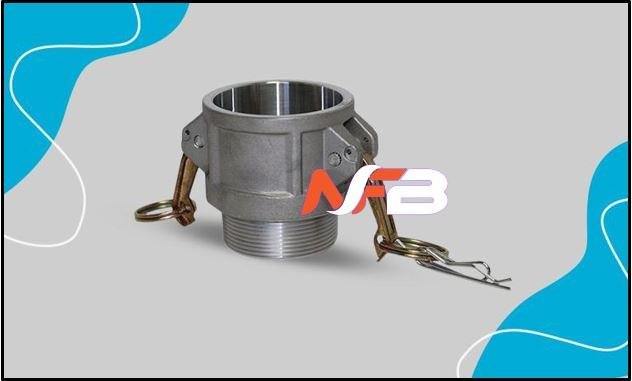When it comes to fluid transfer in industrial settings, selecting the right cam fitting is not just a choice but a necessity. These fittings, also known as cam and groove couplings, are widely used because of their ease of use and reliable performance. But not all cam fittings are created equal. One of the reasons why you find different size camlocks in the market is 2″ camlock, 3″ camlock fittings, and many more sizes and types.
With so many options out there, making a mistake in choosing the right fitting can result in inefficiencies, safety hazards, and unnecessary costs. In this blog, we will explore the essential tips for choosing the right fitting. A widely recognized acronym for choosing camlock fittings is S.T.A.M.P.E.D. This method ensures the correct selection through a systematic approach. Considering these factors will help you enjoy a leakproof, full flow of transfer of various materials.
Choose The Right Cam Fittings With These Tips:
Size
One of the first considerations when choosing a camlock fitting is the size. The size of the camlock fitting must match the size of the hose or pipe it will be used with. Sizes are typically available in inches and range from 1/2 inch to 6 inches. It is essential to ensure that the camlock fitting’s size corresponds to the diameter of the hose or pipe to prevent leaks and ensure a tight seal. Accurate sizing is crucial for maintaining the integrity of the fluid transfer system. An incorrect size can lead to leaks, reduced efficiency, and potential safety hazards.
Temperature
Camlock fittings feature such a design that they help operate within specific temperature ranges, which vary depending on the material. It’s vital to choose a fitting that can withstand the operating temperatures of your application. Different hose camlock materials have different temperature tolerances. For instance, stainless steel camlock fittings can handle temperatures ranging from -150°F to 500°F, making them suitable for extremely cold or hot environments. Choosing the right material based on the operating temperature can prevent material degradation and ensure the longevity of the fitting.
Application
The application in which the camlock fitting will be used is a critical factor in the selection process. Camlock fittings are used in various industries, including chemical processing, agriculture, food and beverage, oil and gas, and water treatment. Each industry has specific requirements and standards that the fittings must meet. Compliance with industry standards and regulations is essential for ensuring safety and performance. For example, In the chemical industry, fittings may need to meet specific corrosion resistance standards. In the F&B industry, camlocks must meet FDA and NSF standards.
Material
The material of the camlock fitting plays a significant role in its performance and durability. Common materials include:
- Aluminum: Lightweight and cost-effective, suitable for general-purpose applications.
- Stainless Steel: Highly durable and corrosion-resistant, ideal for harsh environments and high-temperature applications.
- Brass: Resistant to corrosion and suitable for applications involving water, air, or non-corrosive fluids.
- Polypropylene: Lightweight and resistant to chemicals, suitable for agricultural and chemical applications.
When selecting a material, consider the chemical compatibility and corrosion resistance. Stainless steel is known for its corrosion resistance. As a result it is ideal for applications involving corrosive substances. Polypropylene is resistant to many chemicals, making it suitable for agricultural and chemical industries.
Pressure Rating
Each camlock fitting has a pressure rating that indicates the maximum pressure it can withstand. This rating is crucial for ensuring the fitting can handle the operating pressure of your system. Pressure ratings are typically measured in PSI (pounds per square inch) and can vary significantly based on the material and size of the fitting. It’s essential to match the pressure rating of the camlock fitting to the system’s operating pressure. Using a fitting with an insufficient pressure rating can lead to failures and potential safety hazards.
End Fittings & Connections
Camlock fittings come with various end fittings and connections to suit different types of hoses and pipes. Common end fittings include:
- Male and Female Threads: Ideal for connecting to threaded pipes or hoses.
- Hose Camlock Shank: Designed to fit into a hose and secured with a clamp.
- Flanges: Used for bolted connections in high-pressure applications.
Choosing the right end fitting is crucial for ensuring a secure and leak-free connection. Consider the type of connection required for your application and select a camlock fitting with the appropriate end fitting. Additionally, ensure that the end fitting is compatible with the material and size of the hose or pipe.
Final Words!
We all know that selecting the right cam fitting is a critical decision that impacts the efficiency of your fluid transfer system. Hence, considering the above factors when purchasing camlocks is important to find the correct fit. If you bought the wrong size, you might be unable to install your cam to fight on the desired pipe or hose. If this still sounds a bit complicated to you, then it would be best to speak to an expert technician with a thorough knowledge of the various types of cam fittings, installation, and its usage.











Leave a Reply